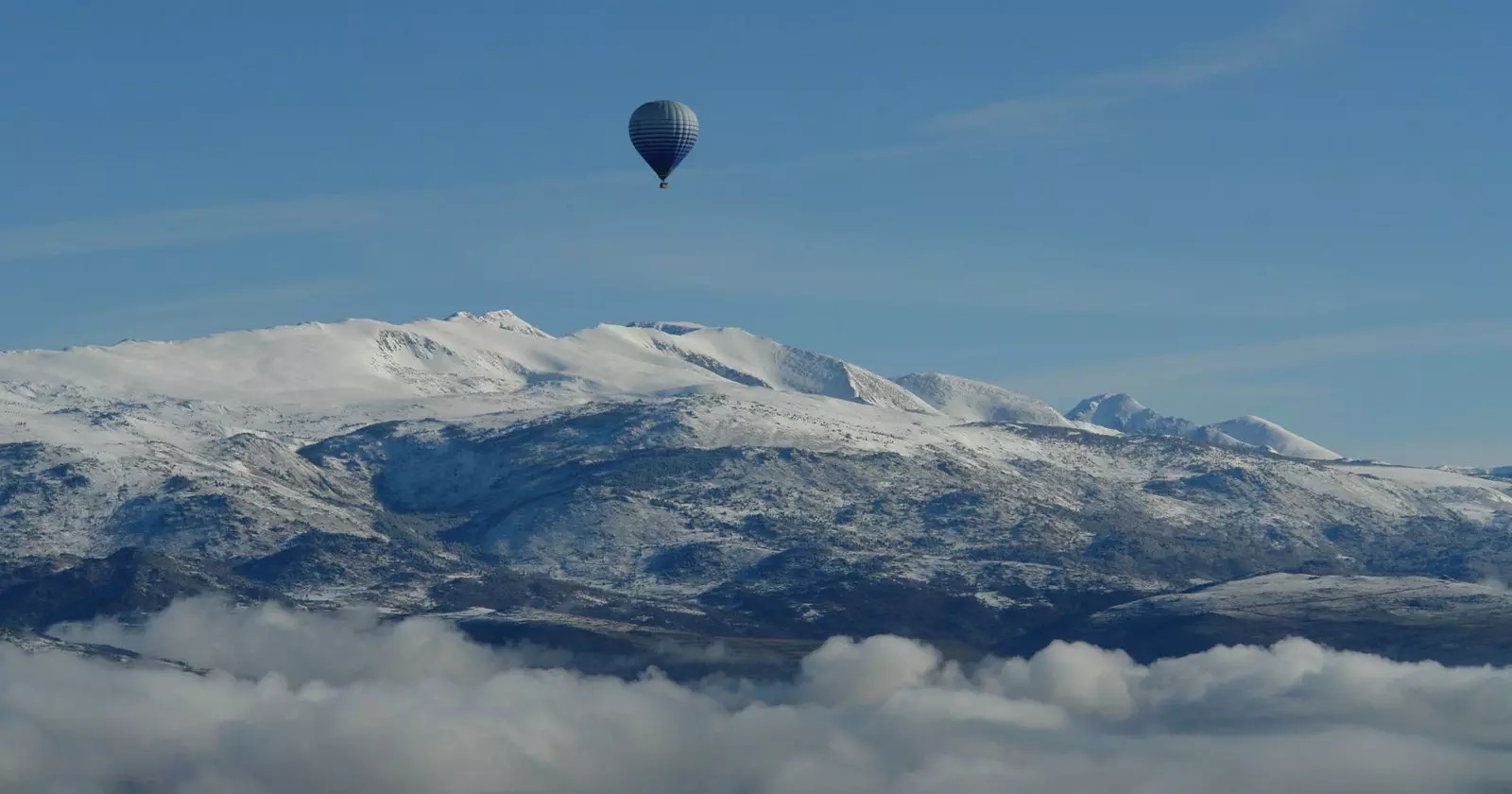
Balloon flight over La Cerdanya, the great valley of the Pyrenees.
There is a magical place a high mountain territory surrounded by three thousand, with great cultural wealth, where nature is shown in its purest state and tranquility and well-being take over leisure time... Of course, only if you want, because, If what we are looking for is adventure and adrenaline, the Girona Pyrenees is our destination. Welcome to the regions of Cerdanya, Ripollès and Garrotxa.
SKIING IN CERDANYA
If anything stands out Catalan region of Cerdanya, made up of the upper Valle del Segre, It is because of its altitude, with peaks that reach 3,000 meters, but also because of its breadth (it is known as the Great Valley of the Pyrenees) and its orientation, from east to west, which guarantees more than 3,000 hours of sunshine a year.
That is why the easternmost area of the Pyrenean mountain range is pioneer in the so-called winter sports, since it has five ski resorts, two of them alpine: Masella and La Molina.
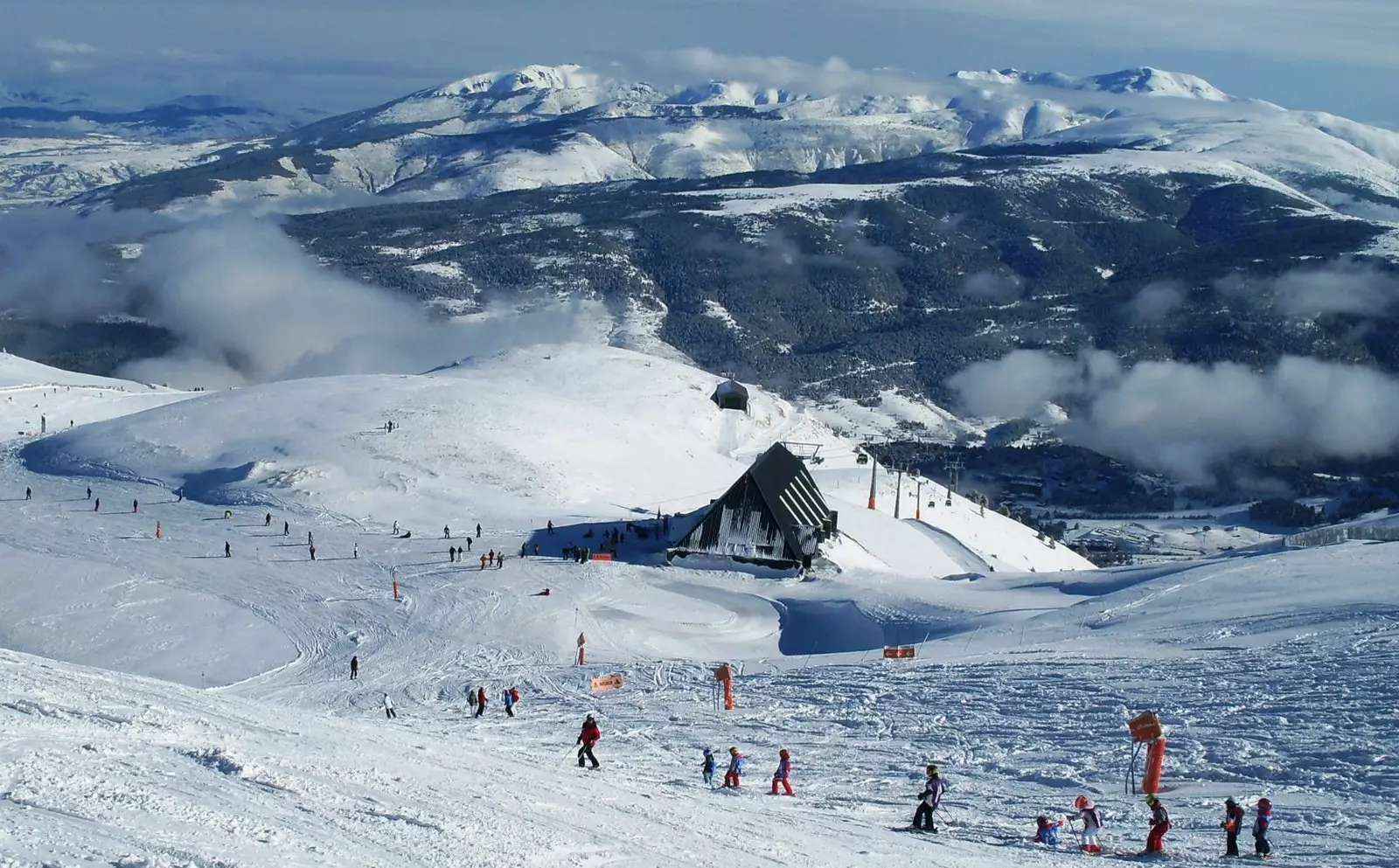
La Molina Station, in Girona.
Masella, on the Tosa mountain (2,535 m), is a very familiar station... And school!, if we take into account that during the white week the majority of schools in the region come to their 74 skiable kilometers for children and young people to learn and perfect their technique.
This is because of a total of 65 slopes, 24 of them are blue and 23 red, perfect for taking the first 'slides' on the snow. It is also known as the capital of night skiing for being the winter center with the most illuminated kilometers in the entire Pyrenees.
For its part, La Molina (with 67 skiable kilometres) can boast of being one of the oldest winter sports resorts in Spain, since its first commercial ski lift dates back to 1943. You will see old photos of its cable cars (and you will understand why what began to be called egg) in the Niu de l'Àliga Refuge, located at the highest point, at 2,537 meters above sea level.
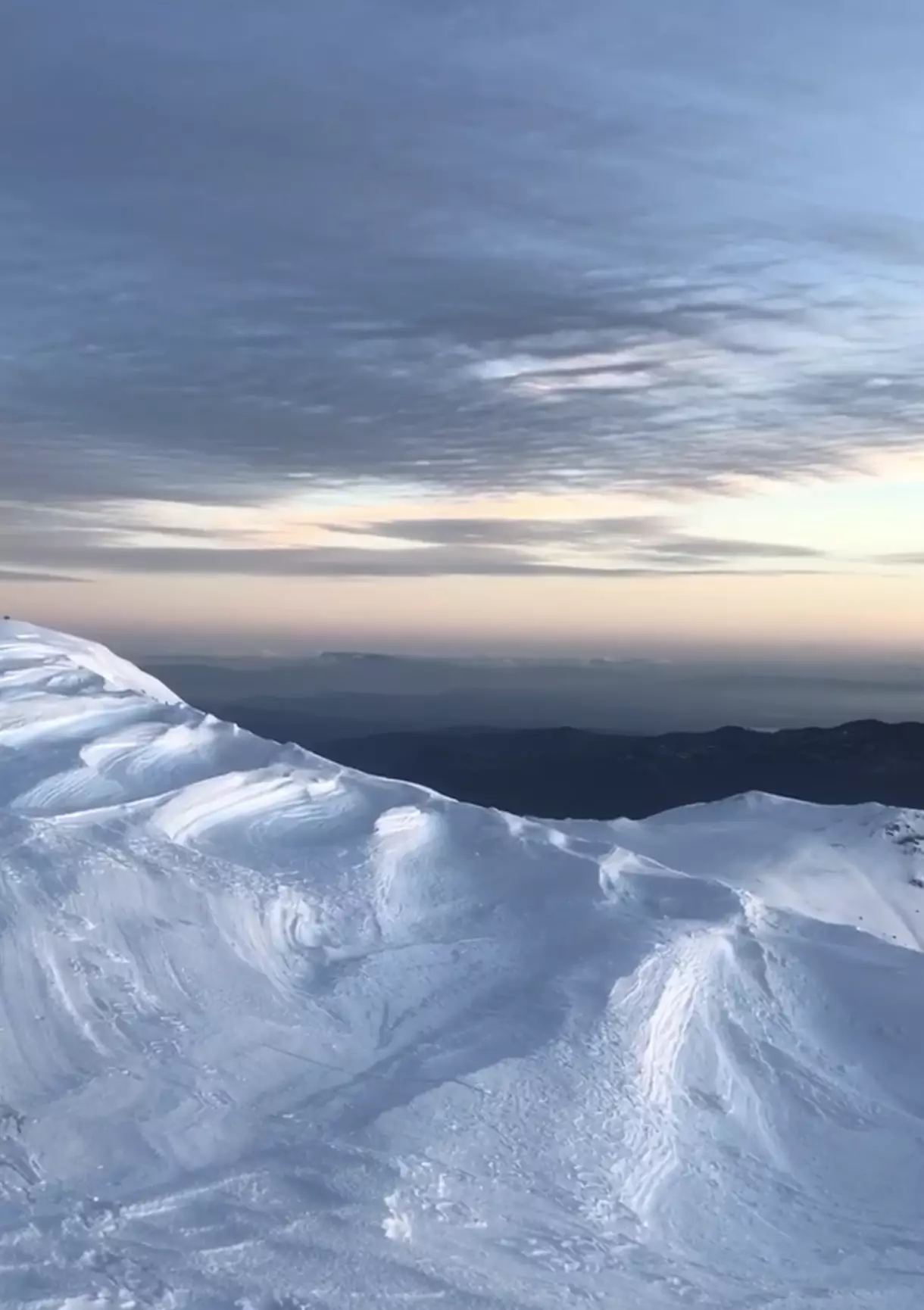
Sunset next to the Niu de l'Àliga Refuge (2,537 m).
WITH HEIGHT
You can reach this mountain refuge located at the top of Tosa d'Alp and which is part of the Cavalls del Vent route (which links eight refuges in the Cadí-Moixeró Natural Park) riding on the recently opened Cadi-Moixeró cable car, which in about 20 minutes ascends (overcoming a drop of almost 1,000 metres) from the base of the station and offers panoramic views of the Catalan and French Pyrenees (and the Monserrat mountain range on clear days).
Or you can also stop halfway, get out of the cab and continue the journey wearing snowshoes to continue the ascent through a steep alpine environment so remote that sometimes makes us imagine that we are explorers from other times making our way through the Arctic.
The Altitud Extrem company is in charge of this new activity and if you are lucky enough to have Xabi Fanlo, its director, who is in charge of guiding your progression on the slopes, you will have a good time discovering snow ledges, avoiding dangerous areas with ice sheets and moving 'like a fish in the snow' through the mountains without having to be an expert.
Once you are in the highest refuge in the Eastern Pyrenees and after seeing an incredible sunset, the resort offers the so-called Niu de l'Àliga Refuge Experience 2537, which consists of a dinner based on local products (cold meat, escudella and a cheese fondue) and the possibility of going down either in the cable car or perform a night descent down the slopes by moonlight or headlamps.
FOR THE TREES AND FOR THE SKY
For those looking for other types of activities that are less sporting and more playful, the adventure park in the trees of La Molina is equipped with a super zip line 300 meters long and with several circuits for ages with Tibetan and hanging bridges and the most entertaining jumps.
As a novelty, this year they have just inaugurated a escape room with which to measure your mental abilities, putting you in the shoes of a pister-rescue who has to analyze, find clues and discover codes in order to rescue the victim of an avalanche.
A 'tad' higher than the treetops, specifically at almost 1,000 meters above sea level, another of the activities that can be carried out in Cerdanya: the balloon flight.
Departing first thing in the morning from the aerodrome, guided only by the wind and masterfully piloted by Xavi Aguilera, from Camins de Vent, We will ascend slowly thanks to the hot air to discover the colors of the sky, the valley and the mountains. Once on land, and after helping to collect the 'cloth', a picnic awaits us with cava and typical sweets from the area.
TO THE CASTLE ON A VIA FERRATA
Undoubtedly the best-known castle in Ribes de Freser, in the Ripollès region, is that of San Pere, founded by the counts of Cerdanya in the year 1000 and a group of dwarfs nicknamed 'golluts' lived next to it until the beginning of the 20th century. ' (referring to his mumps or 'goll'). However, which is reached by the new via ferrata installed in the Roca de la Creu (difficulty K2 with some sections K3) and along the equipped path it is to Castell de Segura, at 1142 meters of altitude and of which few traces remain.
The ascent to the cross that crowns the Roca de la Creu is direct, very equipped and vertical, so once the climb has begun there is no going back until the first escape. Then there will be a descent, a footbridge and a vertiginous Nepalese bridge.
The steps of the via ferrata and the equipped path are not very complicated –including the Tibetan bridge and the climbing dam– so anyone with an acceptable physical condition will be able to overcome them before reaching the Castell de Segura and its imposing views over the Ribes Valley.
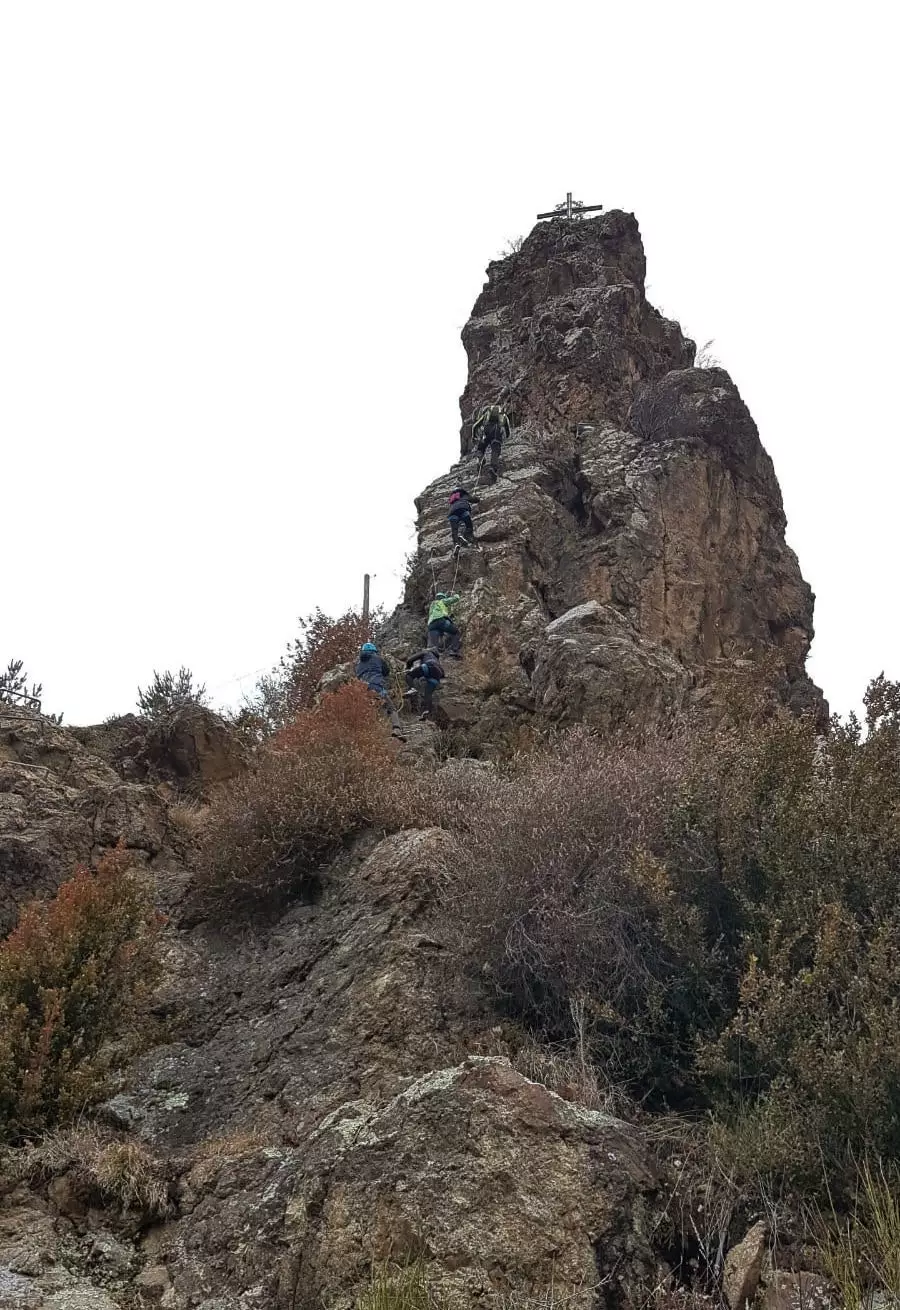
This is how vertical the Ribes de Freser via ferrata begins.
BY TRAIN TO THE VALL DE NÚRIA
That the Vall de Núria can only be access on its famous rack railway It is an effective method of tourist control, but also a simple way to add emotion to the experience. And not because of its speed, since the 12 and a half kilometer journey (which starts from Ribes de Freser) is quite slow, but because of the difference in altitude of more than 1,000 meters that can be overcome in about 40 minutes.
Although before it was the image of the Virgin of Núria (12th-13th century) that attracted pilgrims and visitors to her sanctuary, today it is the ski lifts and the slopes of its ski resort the great attraction of this Pyrenean valley that it is also possible to discover on snowshoes through its three enabled circuits (with the Oxineu company).
With less than eight skiable kilometers, the station is ideal for putting on skis for the first time thanks to the fact that its green (3) and blue (3) tracks are quite horizontal and perfectly equipped. Of course, once you dare to try the red (3) and black (2) you will discover why it is said that whoever skis in Núria is capable of skiing anywhere in the world. Its verticality and narrowness are so impressive that few skiers dare to jump down them with mastery.
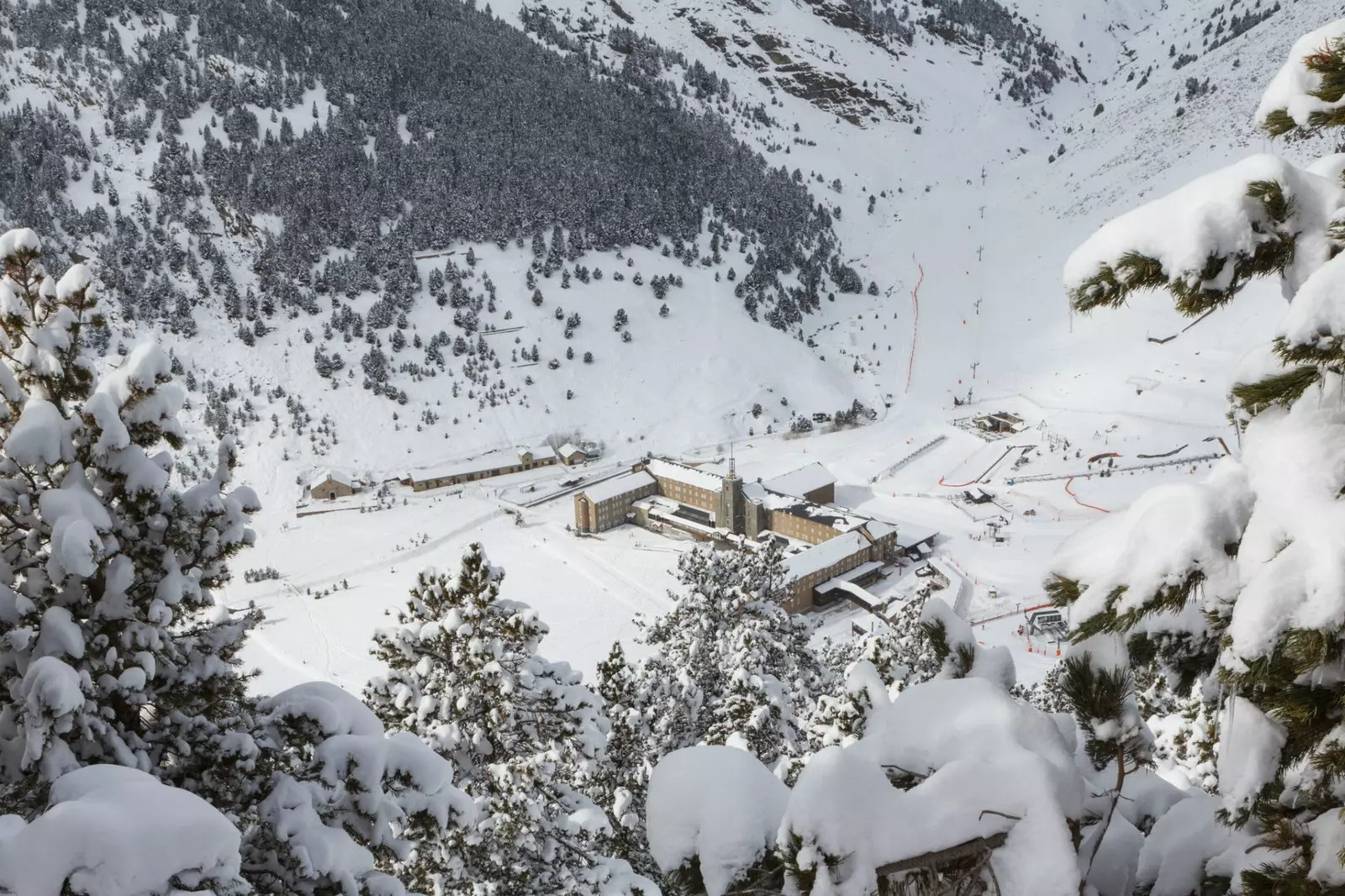
The Vall de Núria in winter.
WELLNESS IN LA GARROTXA
On foot, by bicycle, by donkey or even by carriage, you can walk along the trails of the Garrotxa Volcanic Zone Natural Park, a region that includes the basin of the river Fluvià and the headwaters of the Muga, the Brugent and the Llémena stream. You can also fly over this unique botanical and geological space in a balloon: with more than 40 volcanoes with round or chipped craters and more than twenty basaltic lava flows that, in some cases, closed the passage of rivers forming lakes.
But we have preferred to end this adventure through the Pyrenees of Girona with an experience more related to health and wellness: a yoga class and a macrobiotic cooking class in Mas Garganta, one of the first rural houses that were born in Catalonia.
Authentic in substance and in form, it has 12 simple rooms and several cozy spaces in which to enjoy the rural tranquility. It is in the old kitchen where the healthy cooking workshops given by Matthias Hespe, a German chef who has been living in Girona for 20 years, and in the eco-cabin in the forest where the yoga classes with views of the trees given by Natàlia Oliva take place.
Because as we already announced at the beginning of the report: whoever is standing still in the Pyrenees of Girona is because he wants to.
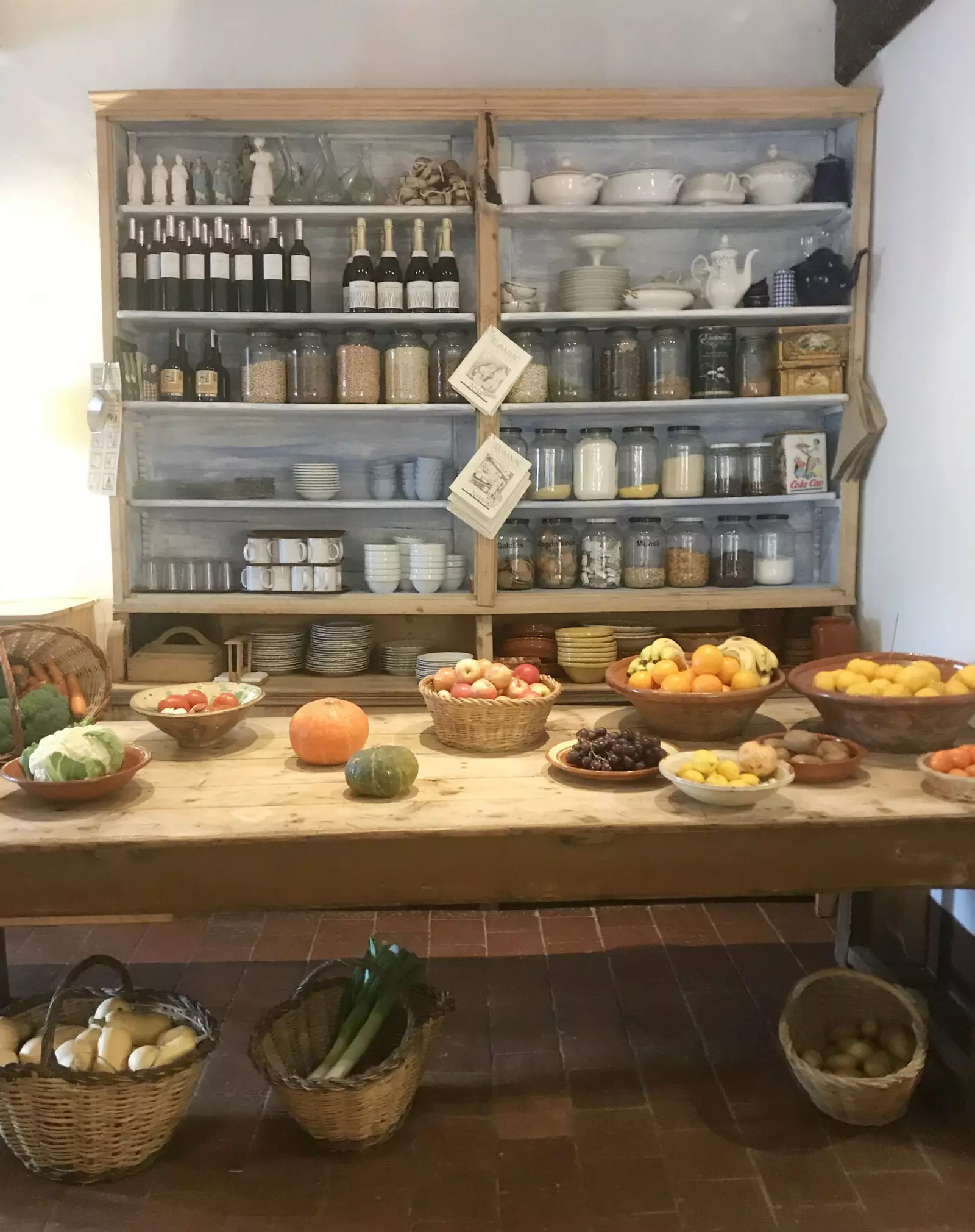
Kitchen in the rural house Mas Garganta, in La Garrotxa.
JOURNEY NOTEBOOK
· Where to sleep in Cerdanya: the Solineu hotel is a quiet family-run establishment located a few meters from the slopes Molina ski resort.
Where to sleep in Ripollès: With contemporary architecture, Resguard del Vents, located at 1,000 meters of altitude, is a mountain hotel that stands out for its fabulous** spa, all glass** and – like the rooms – with views of the Ribes Valley.
Where to eat in Ribes de Freser: Els Caçadors is an ode to local produce, a family restaurant that is also a hotel where you can try outstanding high mountain dishes (look at the rice with ribs and ear and the grilled calçots with romesco sauce), but also recipes with nods to the gastronomy of the nearby coast of Girona: rock mussels grilled on oak, squid and shrimp paella and its –famous in the region– Roman-style squid.
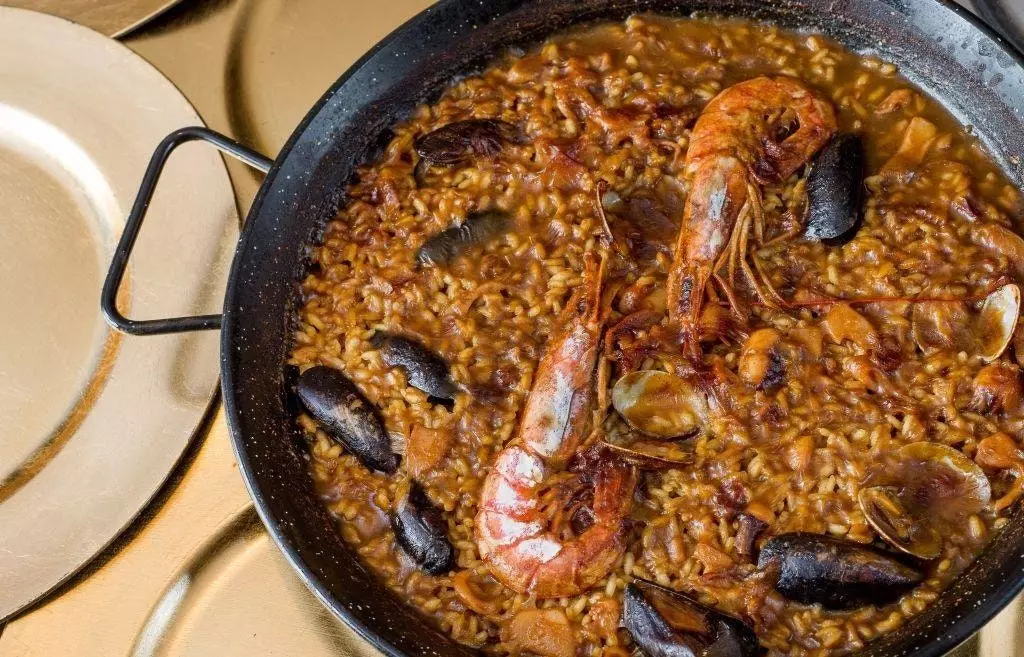
One of the impeccable rice dishes at Els Caçadors restaurant, in Ribes de Freser.
